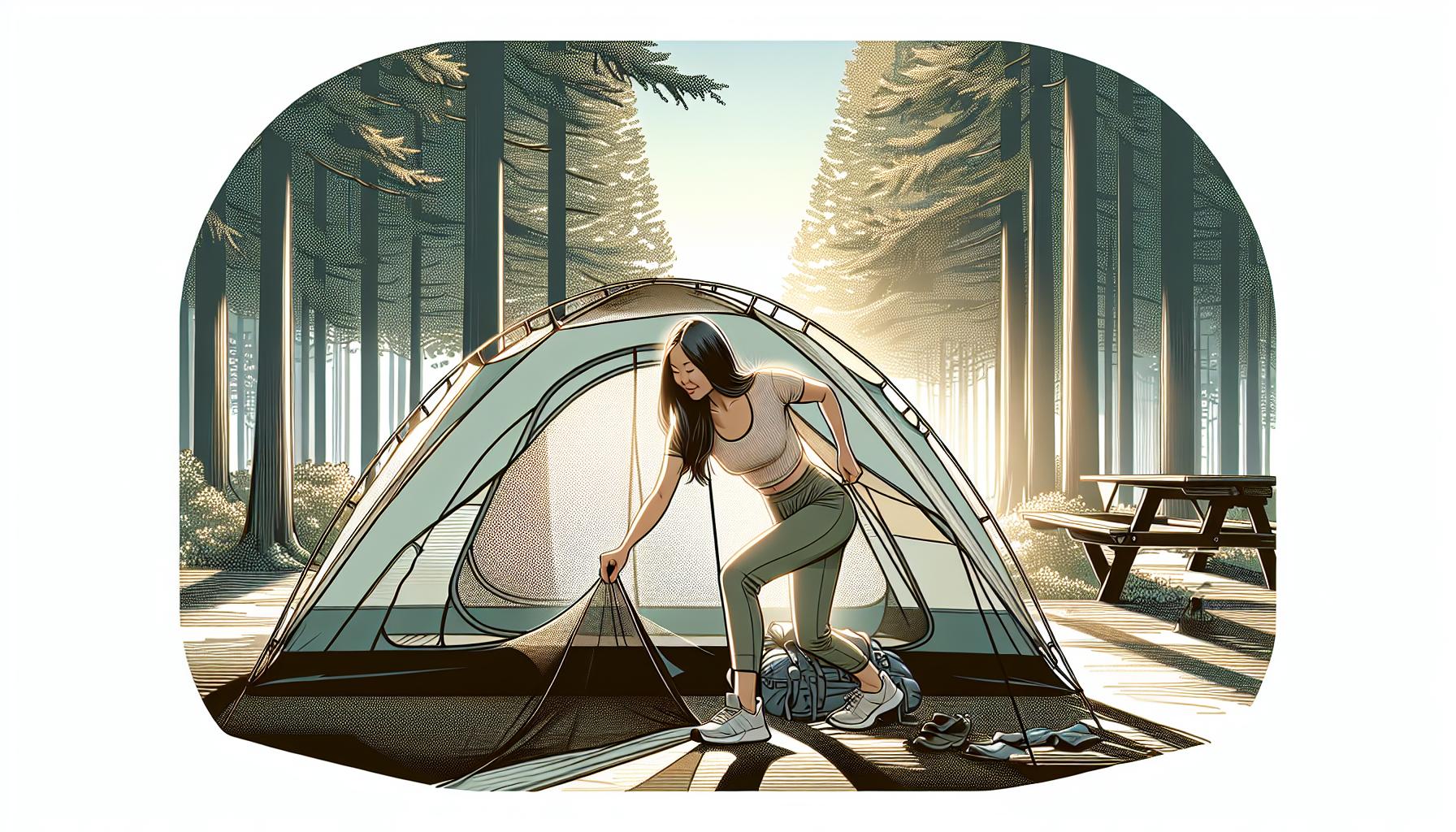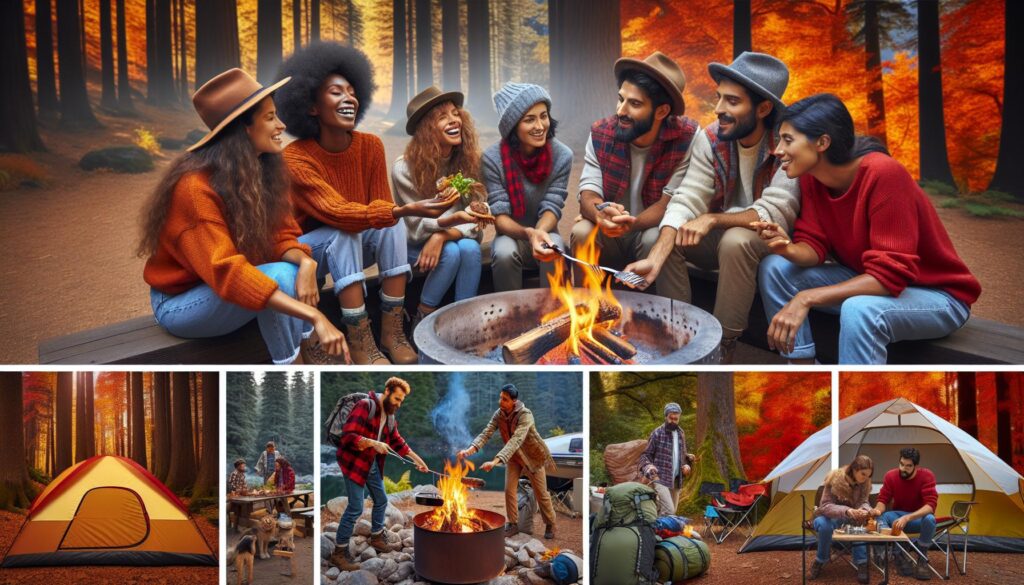Camping offers a unique escape from the daily grind, but choosing the best time to pitch your tent can make or break your adventure. With each season bringing its own set of challenges and rewards, it’s crucial to align your camping plans with your personal preferences and goals.
I’ve spent years exploring the great outdoors, and I’ve discovered that timing plays a pivotal role in the overall experience. Whether you’re chasing wildflower blooms in spring, seeking solitude in the fall, or enjoying the long days of summer, understanding the pros and cons of each season can help you make the most of your camping trip.
Understanding Seasonal Camping Trends
Spring Camping Advantages
Spring camping offers numerous advantages. The temperatures are mild, creating a comfortable environment for camping. In many regions, wildflowers and blooming trees add vibrant colors to the landscape. Wildlife is more active during this season, providing good opportunities for observation and photography. Popular campgrounds are usually less crowded compared to summer, allowing for a more tranquil experience.
Summer Camping Pros and Cons
Summer camping comes with both benefits and drawbacks. The extended daylight hours provide more time for activities like hiking and swimming. Campgrounds often host special events and programs for campers. However, the heat can sometimes be overwhelming, making hydration and sun protection critical. Popular sites tend to be more crowded, potentially affecting the peace and quiet some campers seek.
Autumn Attractions for Campers
Autumn camping appeals to many due to the moderate temperatures and stunning fall foliage. This season often brings fewer bugs, enhancing comfort during outdoor activities. Campers can enjoy seasonal activities like leaf peeping and pumpkin picking. Popular trails and campsites are generally less crowded, offering a more secluded experience. However, shorter daylight hours might limit the time available for certain activities.
Winter Challenges in Camping
Winter camping presents unique challenges. Cold temperatures necessitate specialized gear like winter-rated sleeping bags and insulated tents. Snow and ice can make travel and setting up camp more difficult. Wildlife sightings are less frequent, and some facilities may be closed for the season. On the positive side, winter camping offers solitude and a serene, snow-covered landscape for those prepared to brave the elements.
Evaluating Your Camping Objectives

Types of Camping Experiences
Various camping experiences cater to different preferences and objectives. If you’re seeking relaxation, opt for family or leisure camping, which emphasizes comfort and convenience. For a more rugged adventure, try backpacking or wilderness camping where you carry all essentials and immerse in remote nature. Enthusiasts craving an adrenaline rush should consider adventure camping, combining activities like rock climbing, kayaking, or mountain biking. Those intrigued by self-reliance may find enjoyment in survivalist camping, focusing on primitive skills and minimal resources. Each type aligns with distinct goals, shaping the best time for your trip.
Considering Event-Based Camping
Event-based camping aligns trips with specific occurrences or seasons. Music festivals, like Coachella in April or Bonnaroo in June, provide a lively atmosphere with communal camping. Seasonal events such as fall foliage tours in October or winter sports festivals in December offer unique experiences tied to particular times of the year. Stargazing fans should align trips with celestial events like meteor showers or eclipses, enhancing their camping adventure. Wildlife enthusiasts might schedule visits during migration seasons or mating periods for optimal sightings. Evaluating event-based objectives helps in selecting the perfect timing for an enriching camping experience.
Geographic Influence on Camping Times

Best Regions for Seasonal Camping
Different geographic regions offer optimal camping experiences during specific seasons, influenced by climate, terrain, and environmental conditions.
Spring
In spring, the Southern United States, like Texas or Georgia, provides mild temperatures and blooming landscapes. These regions have comfortable weather, avoiding the sweltering heat of summer. For example, the Texas Hill Country features wildflower blooms, making it a visually stunning destination.
Summer
During summer, the Pacific Northwest, including states like Washington and Oregon, offers milder temperatures and lush green forests. These areas avoid the extreme heat found in other parts of the country. Washington’s Olympic National Park, with its temperate rainforests and coastal views, is ideal.
Autumn
In autumn, New England states like Vermont and New Hampshire showcase vibrant fall foliage, providing picturesque camping environments. These regions experience cooler temperatures, reducing the discomfort of summer humidity. The White Mountains in New Hampshire offer breathtaking views and a variety of trails.
Winter
For winter camping, consider the Southwestern United States, including Arizona and California. These regions provide milder weather, avoiding the harsh snow and cold of northern states. Joshua Tree National Park in California remains accessible and offers unique desert landscapes.
Geographic influences in each of these regions contribute to distinct camping experiences, highlighting the importance of selecting the right time based on location and season.
Essential Gear for Different Camping Seasons

Gear for Warm Weather
Camping in warm weather requires gear that ensures comfort and safety in higher temperatures. I always pack lightweight, breathable clothing like moisture-wicking shirts and quick-dry shorts to stay cool and dry. A wide-brimmed hat and UV-protective sunglasses are essential to protect against the sun’s rays.
A high-quality tent with proper ventilation is crucial. Look for tents with mesh panels that allow airflow while keeping insects out. A sleeping bag rated for summer use—preferably lightweight and compactable—helps to avoid overheating at night.
Hydration is paramount when camping in warm weather, so I include a durable water bottle or hydration system. Electrolyte tablets or powder can prevent dehydration. Sunscreen with a high SPF and insect repellent are key items to protect my skin.
Gear for Cold Conditions
In cold conditions, staying warm and dry becomes the primary focus. My packing list includes insulated and layered clothing. Base layer garments made of merino wool or synthetic materials provide insulation and moisture-wicking properties. Mid-layers, like fleece or down jackets, offer additional warmth, while waterproof outer layers shield against rain and snow.
A four-season tent designed to withstand strong winds and heavy snowfall is essential. My sleeping bag should be rated for temperatures lower than expected, and I use a sleeping pad with high R-value to add insulation from the cold ground.
Keeping hydrated in cold weather is also important, so I carry an insulated water bottle to prevent freezing. Hand and foot warmers are useful for additional comfort. I always include a portable stove for hot meals and drinks, which are crucial for maintaining energy levels in cold climates.
Conclusion
Choosing the best time to go camping really boils down to your personal preferences and goals. Whether you’re drawn to the blooming beauty of spring or the serene solitude of winter, each season offers unique experiences. It’s crucial to align your camping objectives with the right season and ensure you have the appropriate gear for a safe and enjoyable adventure. By doing so, you’ll maximize your camping experience and create unforgettable memories. So pack your gear, pick your season, and embrace the great outdoors!
Frequently Asked Questions
What are the benefits of camping in different seasons?
Each season offers unique advantages: spring camping highlights blooming nature and mild weather, summer camping provides extended daylight and warmth, autumn camping boasts beautiful fall foliage and cooler temperatures, and winter camping offers solitude and snowy landscapes.
How can I align my camping objectives with different types of camping experiences?
Identify your main goal—relaxation, adventure, adrenaline rush, or self-reliance—then choose the appropriate season and camping style that best supports these objectives. For example, summer may be best for relaxation, while winter provides serene isolation for self-reliance exercises.
What is event-based camping?
Event-based camping revolves around specific occurrences such as meteor showers, wildlife migrations, or festivals, enhancing the experience by timing the trip to coincide with these events.
What gear do I need for warm weather camping?
For warm weather, pack lightweight and breathable clothing, a high-quality tent with proper ventilation, and essential hydration supplies such as a water filter and portable bottles.
What gear is essential for cold weather camping?
Cold weather gear includes insulated and layered clothing, a robust four-season tent, a sleeping bag rated for low temperatures, insulated water bottles, hand and foot warmers, and a portable stove for hot meals and drinks to maintain energy levels.
